Nomadic living is a steady growing trend with people understandably wanting to escape the corporate norms of life to pursue something more freeing and in some cases much more affordable. Starting out, it is pretty unrealistic to buy a van, pay for all of the renovations, and so on. To start out there are a few cheaper and more realistic ways of living the nomadic life to keep in mind. Such as living in a tent, weather it be on property somewhere or dispersed WMA campsites. It wont be as comfortable as living in something as a van or RV, but it is sure a lot cheaper and a good starting off point if that is your end goal. Which definitely is not to say that using a tent as a living arrangement can’t be comfortable, realistically budget typically equals comfort. And if the budget allows it could be a great and comfortable experience. With that said, you are carrying your home and everything that you may need to survive. With that in mind there are a lot of things that you need to consider, weather it be the tent you’re living in to the water you’re drinking.
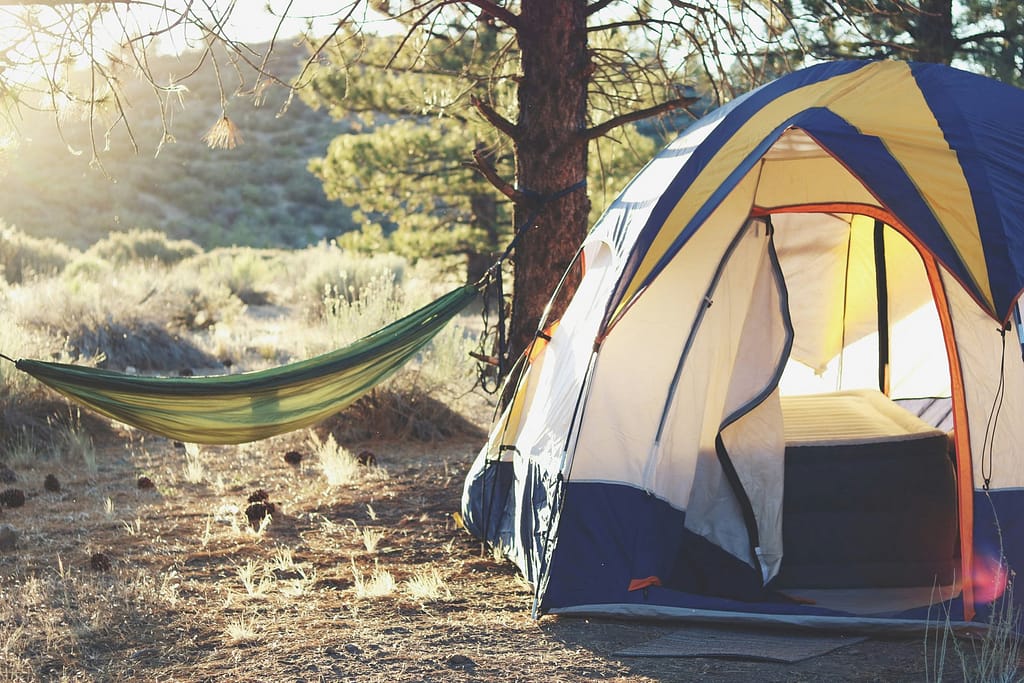
Picking the Right Tent
With the tent market being heavily saturated and there are thousands of different tents out there to choose from. It may be pretty hard to know where to start with picking out your tent. There are plenty of good brands and tents on the market, now it is up to you to pick which one would best accommodate both you and whoever may accompany you. One easy to obtain and fairly reliable brands is Coleman. Plus you can find them at most major stores.
There are several aspects that go into selecting the right tent, one being the size of the tent. Tents come in sizes of how many people can fit in the tent. Keep in mind that is purely the amount of people that can cram in there. A single person tent is basically a sleeping coffin. When it comes to tent size bigger is better. I would recommend a 6 person tent for a single person to live in, maybe if you are just using it as a sleep system and are primarily traveling then you could probably get away with a 4 person tent to stick a mattress in at night. For more people, such as couples or even pets, I would add space accordingly.
The material of the tent is also an important consideration while picking out your tent. The two main materials are nylon and canvas. Nylon is cheaper, cooler, and more widely available, while a canvas tent is more suited for the 4 seasons, way more durable, yet they have a much steeper stepping off price point. If the budget permits canvas is the way to go as far as living in a tent goes. They will hold up better in harsh weather conditions and over time will be a far hardier investment plus you can install a wood burning stove to keep warm in a canvas tent.
It is also important to consider all of the things you will need to go with the tent to set it up. For example you will need a footprint which is a tarp the size of the base of your tent to smooth out the rocks, sticks and any other potentially sharp objects that could poke through the floor of your tent. It also aids in keeping the water out. Most tents come with tent pegs but you will need a hammer or mallet to hammer them into the ground, I forgot a hammer and had to use foraged rocks my first trip, not a fun time. Some people do find it beneficial to also include a tarp on top of your tent to aid in harsh weather conditions.
- Cotton Canvas
- Made in the USA or Imported
- 【BREATHABLE FABRIC and WIND ENDURANCE】 The Regatta canvas tent is made from breathable performance canvas. It’s waterpro…
- 100% Polyester
- Made in the USA or Imported
- Instant setup in just 60 seconds – perfect for quick camping trips or backyard stays

Getting a Good Nights Rest
Sleep is extremely important weather you are just chilling at camp, working, or hiking. You need a good nights sleep to be able to function. A big part of that is your sleep system, which is what you sleep on and the blankets/sleeping bag that you have as well.
Air mattresses are a good and convenient way to sleep, you just have to pump it up and you have a bed. However air mattresses can pop fairly easily and if you have a furry friend I would highly recommend against it. Instead maybe go for a cot, a tri-fold mattress ,or even a roll-up camp mattress. I will say if staying in one place for a extended period of time I would recommend putting a cot or two under your mattress of choice to help improve air flow under the bed to prevent any moisture from getting under there.
Your sleeping bag is also important, you do not want to freeze at night. Not fun and you wont get any sleep. It is recommended that you go for a temperature rating 10-20 degrees bellow what the temperature is going to be, so if its 50 degrees you might want to go to a 30-32 degree and bellow sleeping bag. You can also pile blankets on top of your sleeping bag as well as add a hot hand or two in the bottom of your sleeping bag. Everyone’s body is different so experiment with what works for you.
I would not bother with a inflatable pillow, sure they pack away good but in my opinion are not worth the trade off of comfort. Just bring a regular pillow.
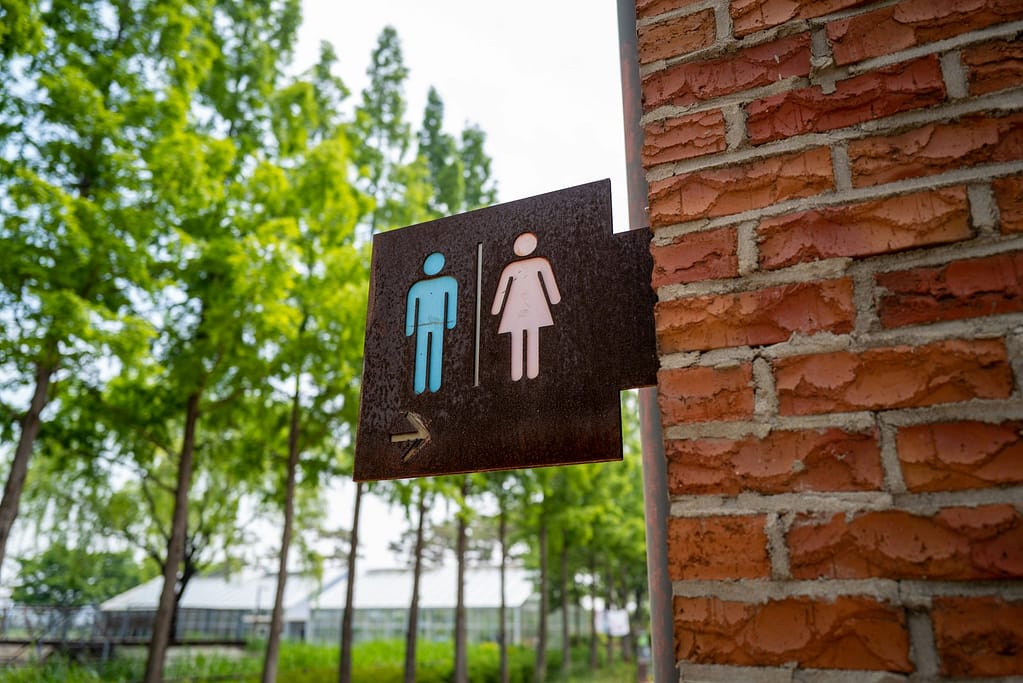
The Bathroom Situation
While at more established campgrounds you have pit toilets or public bathrooms, when you are dispersed, wild camping, or even on your own land given the situation you will need to have a way to do your business. For the actual structure they sell pop up stall tents that are marketed as shower tents and there are several types, ranging from 30+ dollars depending on how complex you want to get with it.
For the actual toilet situation there are a few different routes you can take. The cheapest being getting a 5 gallon bucket and either diy a toilet seat or alternatively they sell toilet seats that are made for this and pop right on a toilet seat. For this method you can either use pine pellets, which are sold tractor supply for about $8 USD, and sprinkle those over your business and it will soak up both urine and odors. Alternatively you can place a bag between your bucket and toilet seat and take the bag out accordingly. They also make portable camp toilets, some with hose attachments so you can use campground dump stations, but the majority seems to lean towards a bag system. They also carry composting toilets, given they are the most pricey option, if you are more stationary this may be a good option for you.
For showering some campgrounds have shower houses but for the off grid and dispersed you will need to either get a solar heated shower bag or you could opt for a bucket and water pump/heater. Hang them in your privacy tent and you have a shower. Attaining water for showering is a lot easier then obtaining drinking water. If you have access to fresh water you can gather that in your shower bag or bucket to utilize for your shower. Just make sure to use environmentally friendly soap so the water run off doesn’t harm the wildlife around you.
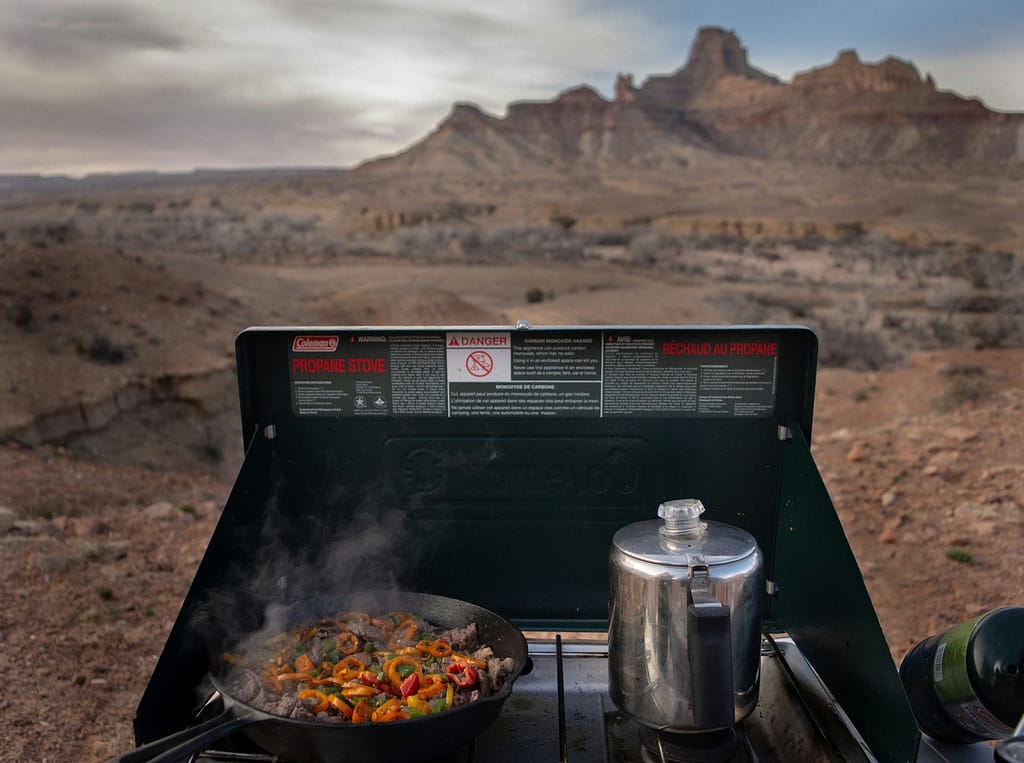
Building Your Camp Kitchen
Having a way to cook your own food is fairly important, sure you could just eat out but over time that becomes expensive. Also there is a lot of people who love to cook. There are a few aspects of a camp kitchen and it can be as simple or complex as you can afford or desire.
The first thing you are going to want to consider for your camp kitchen is a way to heat or cook your food. I recommend something that runs on propane sense it could be hard to find a power station with enough watts to run a hotplate. And if you do it will most likely drain your power station fairly quickly. There are a few propane options such as a standard Coleman grill which contains 2 burners, there are also compact backpacking stoves which are just a burner that sits on top of your propane bottle, and I will also cover the one burner propane stoves that you place the small canister of propane directly in, these are all pretty good options.
I am sure that we all have had marshmallows over a fire at least as kids, cooking over a fire can also be an effective way to cook but keep in mind you would have to start a fire every time you would like to cook which could become a hassle. However I do recommend this as a backup, or a alternative if you do have a camp stove sense it can save propane and the fire will keep the bugs away. It just does not seem realistic to cook every meal you have over a fire.
As far as keeping your food goes, you can keep non-perishables in a plastic tote and the things that must keep cold you could either opt for a 12 volt cooler fridge which could be pretty pricey or you could go with your standard cooler. If going with a standard cooler I recommend placing your ice in some sort of water tight container so that if it melts it will not potentially ruin any of your foods.
Remember to bring cookware, plates, cutlery, and something to wash your dishes in, I recommend a 2 tub system one where you can wash the dishes and the other where you can rinse. A fold out table and awning could also be very beneficial especially on rainy days.
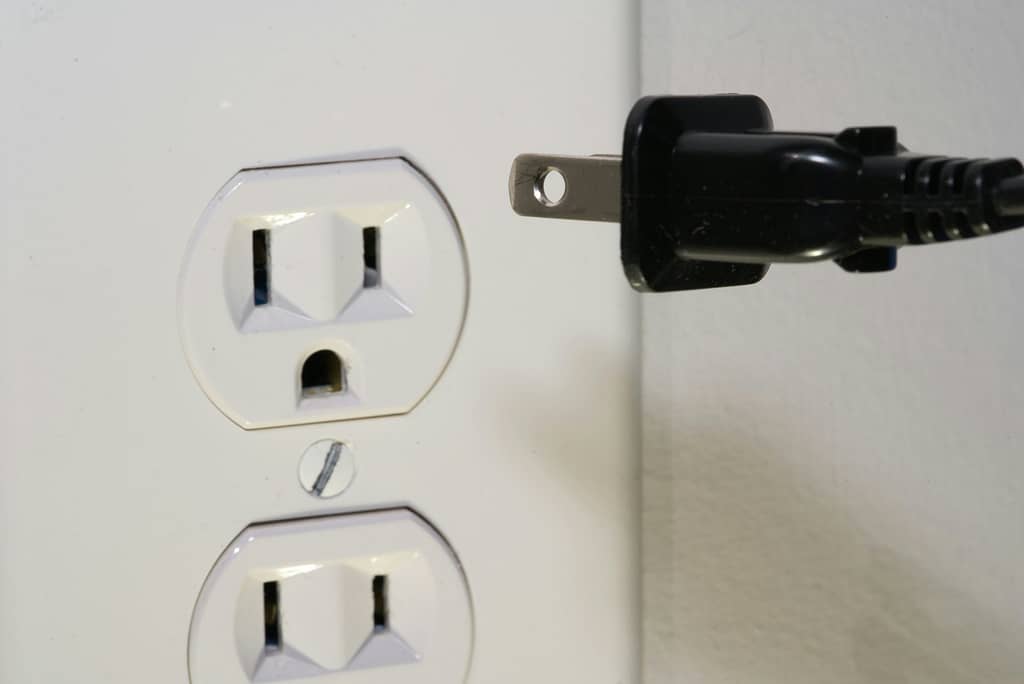
Utilities
You cannot have devices without a way to power them, you can’t drink without water. You need to be prepared with everything that you need. If you are stationary I recommend running a line of electricity (or installing solar) and water so you can have your own hookups an don’t have to worry about charging a power station all the time. Some campgrounds have electrical hookups, where you can run an extension cord into your tent and from there plug in the things you need charged and what not. And that goes for water as well. you need a way to carry water if you are living in your tent even if you have water hookups. They sell water jugs for this cause in the camping section of Walmart, and other big box stores.
To have access to portable electricity you will need a portable power station such as the jackery, bluetti, or ecoflow. There are several brands and generators at different price points and at different wattages. Some even come with solar where you can charge the portable power station off of the sun while off the grid or have access to limited electricity. Alternatively you can charge it in your car while driving, at public outlets, and so on. These are fairly pricey but they are pretty necessary and get the job done and keep your devices charged and or powered.
For water you will need something to carry enough water to get you to point A to point B. You can do this by carrying water canisters, the size depends on the person and amount of people and pets. They also sell collapsible water containers which could be helpful when tight on space. Additionally you can pick out if your water container has a spigot on it to fill water bottles and wash hands and what not. I recommend always having more water then you expect you need because you never know when you might get stuck or have to wait out a storm or something somewhere in which that extra water can be crucial.
If you work online you might be wondering about wifi, you can always use your phone hotspot or alternatively big box stores such as Walmart carry portable hot spots, which work fairly well but if you are on a mountain or somewhere without reception then you may need to invest in satellite internet. However the price is steep on these satellite internet routers. You can always go off the grid, some parks have wifi in their visitor center and you can venture there or to where there is service to make calls to update people on your location and well being. Or another option is to get a satellite communicator which you can use to get help in sketchy cell situations.
In Conclusion
This is just the tip of the iceberg. And there are several things that I did not cover such as lighting, vehicle, and so on. But this is a good list of the basic fundamentals you will need if you are or are thinking about living in a tent. Stay tuned with Your Fat Nomad to get more informational and travel content about alternative living and body positive hiking. Stay safe and healthy on your journeys and never give up on your dreams.
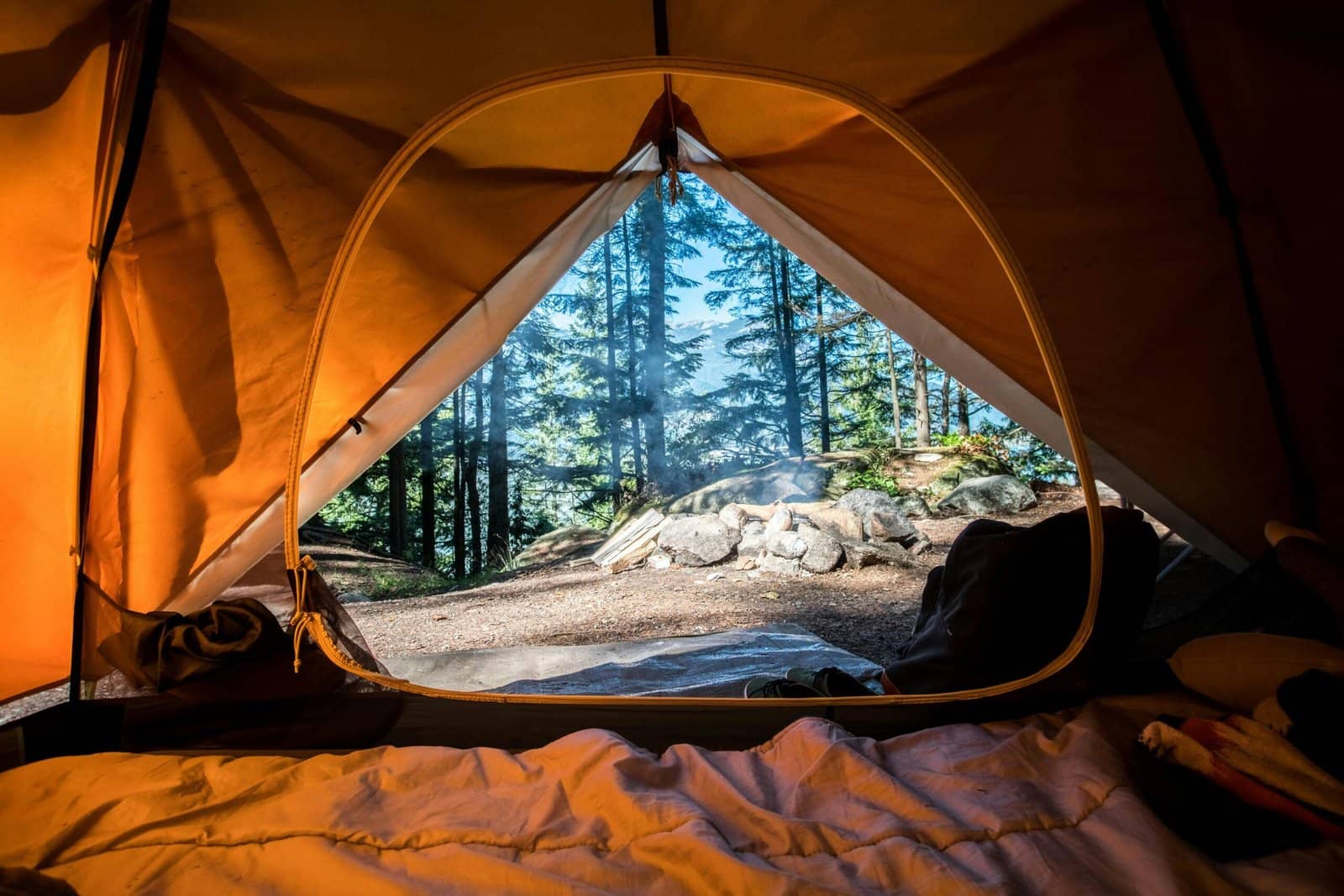

























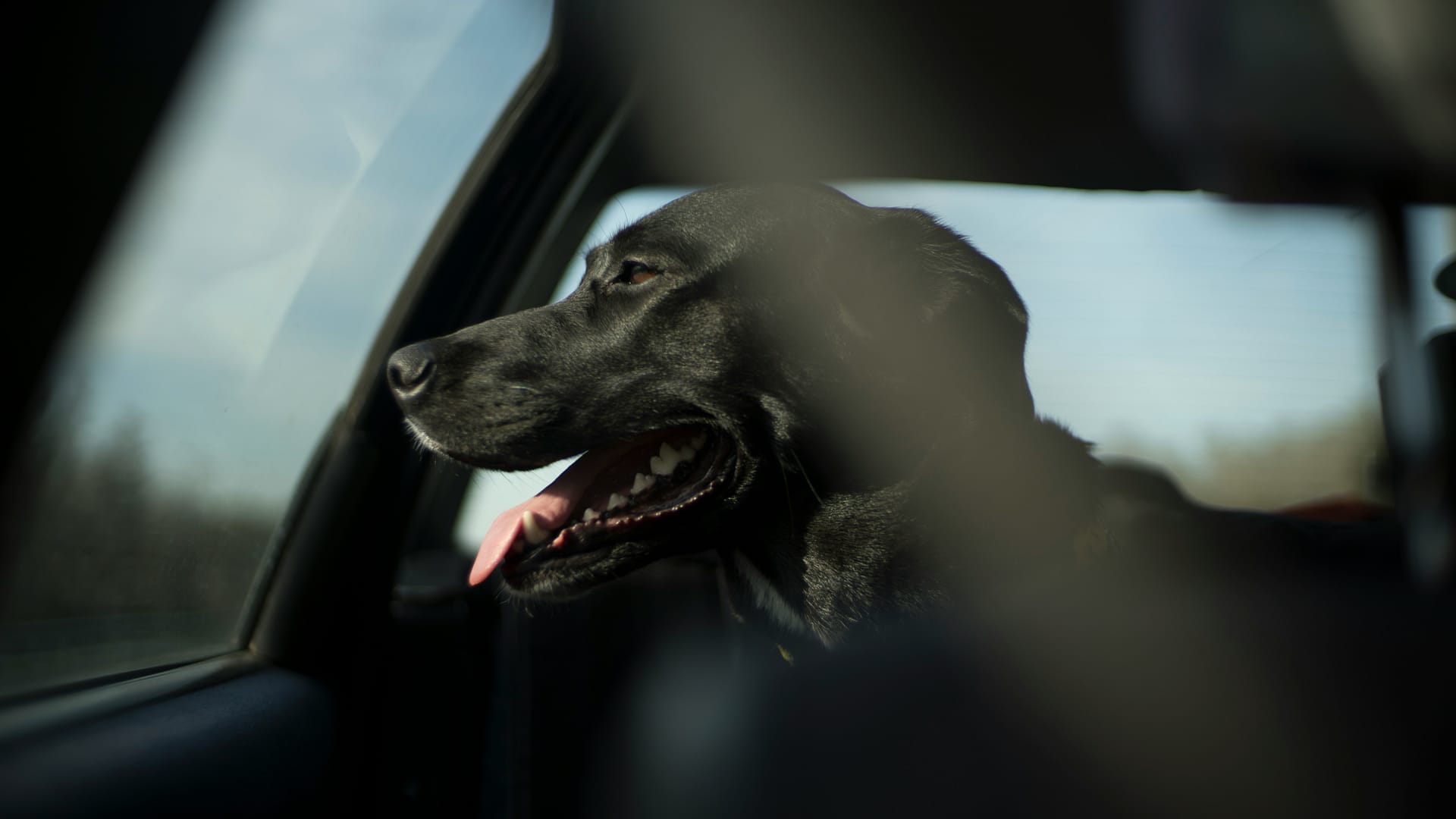


Leave a Reply